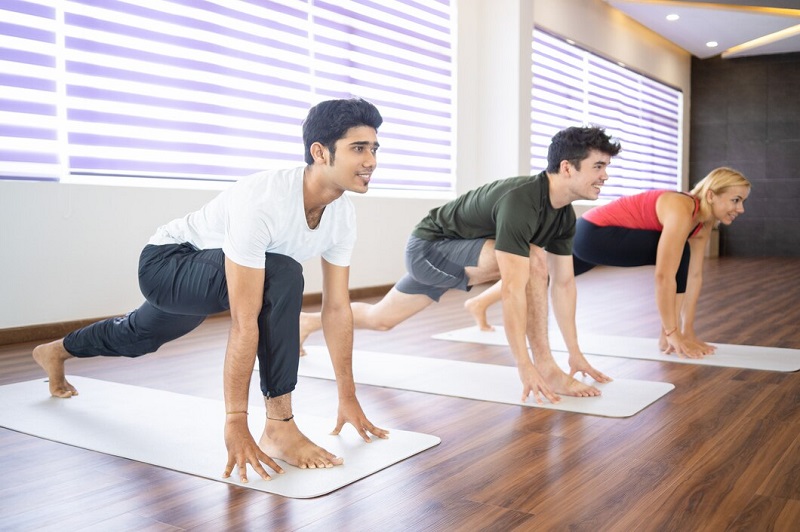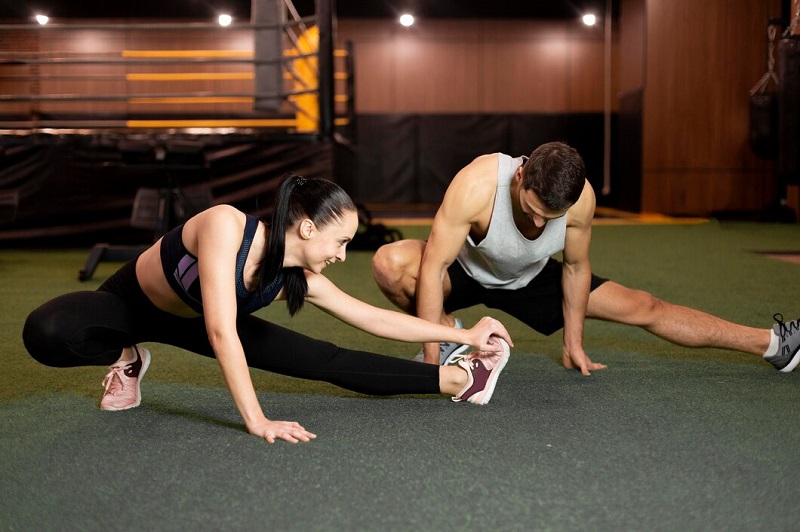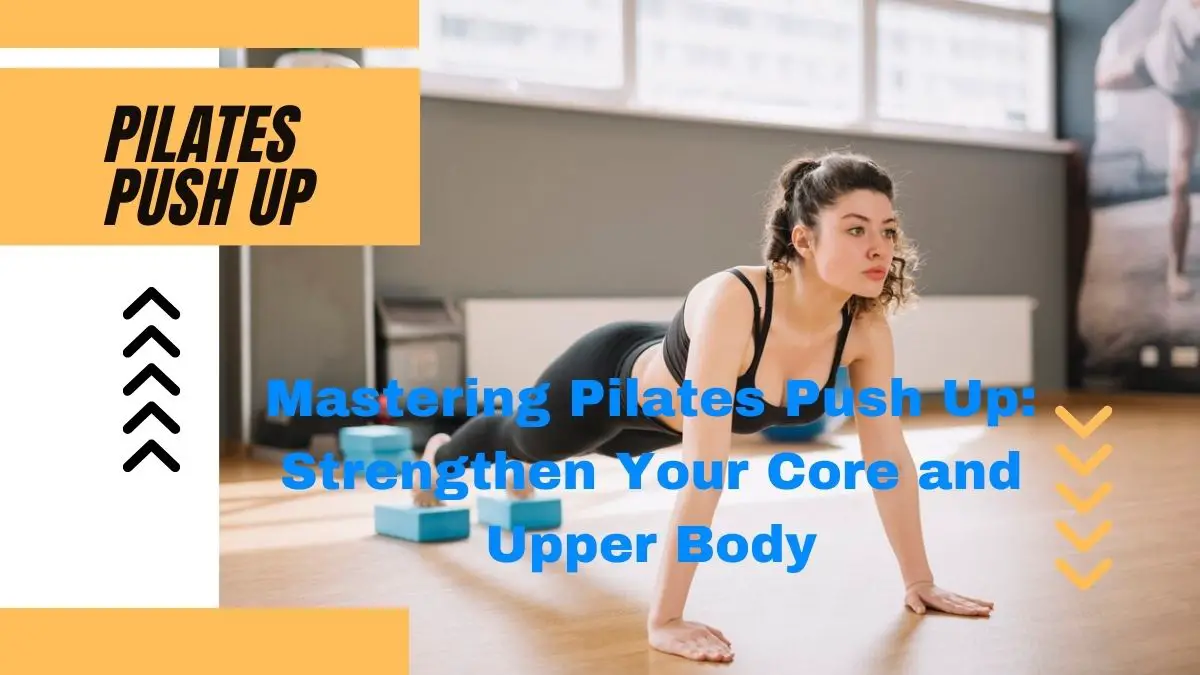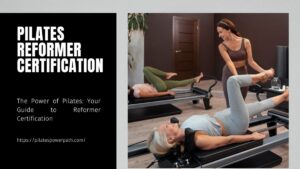Welcome to the world of Pilates—a holistic approach to fitness emphasizing strength, flexibility, and control. Among its repertoire of exercises, the Pilates Push Up stands as a versatile and rewarding movement that not only challenges your upper body but also engages your core and enhances overall body stability. In this comprehensive guide, we will delve into the nuances of Pilates Push Up, exploring its techniques, benefits, variations, and how to incorporate it into your fitness regimen.
Understanding Pilates Push-Up
Definition and Basic Mechanics
Pilates Push Up is a dynamic exercise that blends elements of traditional push-ups with the core engagement and precision characteristic of Pilates. It involves a sequence that requires controlled movement from a plank position to a push-up while maintaining alignment and engaging the core muscles. This exercise focuses not only on arm strength but also emphasizes the recruitment of abdominal muscles, shoulders, and back.
Read More: The Benefits and Unique Experience of Pilates Plus Burbank
Different Variations and Modifications
- Classic Pilates Push-Up Technique: The standard version involves starting in a plank position, engaging the core, and slowly lowering the body toward the ground while keeping the elbows close to the body. Then, push back up to the starting position.
- Intermediate and Advanced Variations: Variations include one-arm Pilates Push, decline or incline Pilates Push Up, and using props like a stability ball or resistance bands to intensify the exercise.
- Modified Versions: For beginners or individuals with limitations, modified versions such as knee-supported Pilates Push or wall-assisted Pilates Push offer a starting point for building strength and proper form.
Benefits of Pilates Push-Up
The incorporation of Pilates Push Up into your fitness routine offers a multitude of advantages.
- Strengthening Core Muscles: Pilates Push Up engages the core, particularly the deep abdominal muscles, leading to improved core strength and stability.
- Enhancing Upper Body Strength: It targets muscles in the chest, arms, and shoulders, contributing to increased upper body strength and endurance.
- Improving Posture and Flexibility: Regular practice of Pilates Push Up aids in enhancing posture by strengthening back muscles and promoting flexibility in the shoulders and spine.
- Engaging Multiple Muscle Groups: It’s an efficient exercise that simultaneously works for multiple muscle groups, promoting overall body conditioning.

Step-by-Step Guide to Performing Pilates Push Up
Preparatory Steps and Warm-up
Before attempting Pilates Push Up, a proper warm-up routine is essential to prepare the body. Begin with dynamic stretches, focusing on shoulders, chest, core, and wrists. This helps increase blood flow, improving flexibility, and reducing the risk of injury during exercise.
Proper Form and Technique Breakdown
- Start in a plank position, ensuring hands are directly under the shoulders, and the body forms a straight line.
- Engage the core muscles and maintain a neutral spine throughout the movement.
- Lower the body by bending the elbows while keeping them close to the sides.
- Push back up to the starting position without compromising form.
Breathing Techniques During the Exercise
Utilize the Pilates breathing technique: inhale deeply through the nose to prepare, then exhale forcefully through the mouth during the exertion phase (pushing up).
Common Mistakes and How to Avoid Them
Some common errors include arching the back, allowing the hips to sag, or flaring the elbows out. Focus on maintaining proper alignment and engaging core muscles to prevent these mistakes.
Incorporating Pilates Push into Your Fitness Routine
Frequency and Repetitions
Gradually incorporate Pilates Push into your routine, starting with a few repetitions and aiming for consistency. Depending on fitness level, aim for 2-4 sets of 8-12 repetitions.
Combining with Other Pilates Exercises or Workouts
Pilates Push Up can be integrated into a broader Pilates routine or combined with other bodyweight exercises to create a well-rounded workout that targets different muscle groups.

Creating a Balanced Routine with Pilates Push-Up
Balance is key; alternating between days dedicated to Pilates Push Up and rest days allows for recovery and muscle growth. Incorporate variations and gradually increase intensity for continued progress.
Tips for Maximizing Pilates Push-Up Effectiveness
Gradual Progression and Challenge
Begin with easier versions and progressively move towards more challenging variations. Gradual progression allows muscles to adapt and grow stronger over time.
Importance of Consistency and Proper Form
Consistency in practicing Pilates Push Up, along with correct form, ensures optimal results while minimizing the risk of injury.
Listening to Your Body and Avoiding Overexertion
Pay attention to your body’s signals and avoid pushing beyond your limits. Rest and recovery are vital aspects of any fitness journey.
Safety Precautions and Considerations
Consultation with a Fitness Professional or Instructor
Seek guidance from a certified Pilates instructor or fitness professional, especially if you’re new to the exercise or have pre-existing medical conditions.
Modifications for Different Fitness Levels or Injuries
Always prioritize safety. Modify the exercise or seek alternatives if you have injuries or limitations. Focus on proper form and gradually progress.

Understanding Personal Limitations
Know your body’s limits and capabilities. Push yourself, but within a safe and comfortable range to prevent injury.
Conclusion
Mastering Pilates Push Up offers a gateway to a stronger, more stable body. Its integration into your fitness routine, with its myriad benefits and variations, ensures a comprehensive workout targeting various muscle groups. Begin gradually, focus on form, and witness the transformation in your strength, stability, and overall fitness level.
Frequently Asked Questions
Pilates Push Up can be challenging for beginners, but modified versions and gradual progression make it accessible to all fitness levels.
While Pilates Push Up primarily focuses on strength and muscle engagement, when combined with a balanced diet and cardio, it can contribute to weight loss by increasing muscle mass and metabolism.
Consistency is key. Aim for at least 2-3 sessions per week to see improvements in strength, stability, and overall fitness.




